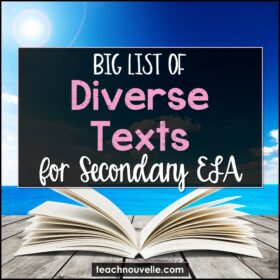
Using Short Stories to Teach Setting
I love using short stories to teach setting! Shorter texts are more approachable to students, and allow you to provide more examples. Short Stories to Teach Setting Setting is one of the earliest literary elements we understand as readers, since we know the difference between the feel of a creepy house in the woods and the warmth of Grandma’s house. Using short stories to teach setting is a great way to move those reading instincts into honed reading skills. Here are two short stories to teach setting that I love: “No Me Dejas” by Mark Oshiro, found on Slate.com This story takes place inside a futuristic hospital. Our protagonist, Gabriela, is preparing for “the Transfer,” a procedure which will allow her to receive all of her dying grandmother’s memories. During the procedure, she experiences a






























